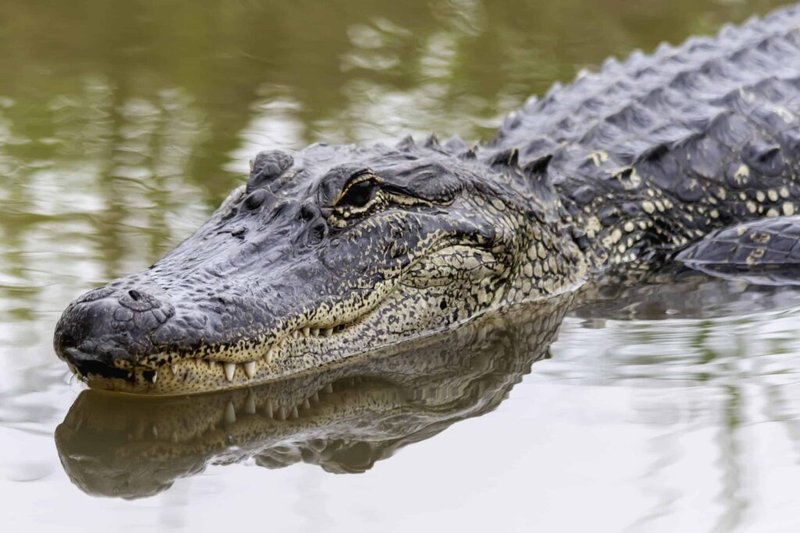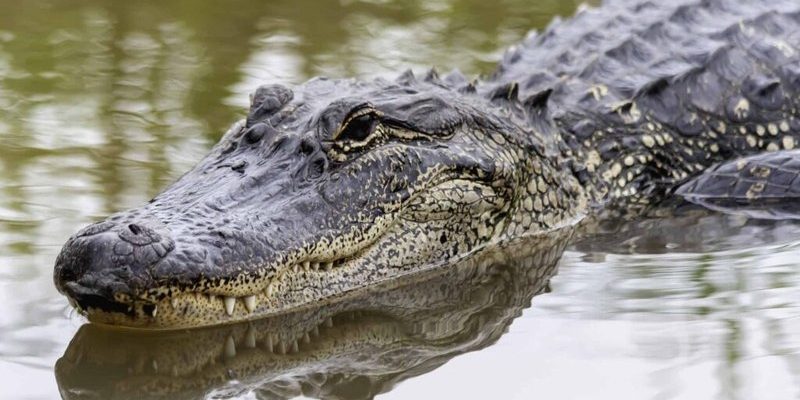
Imagine the wetlands of China as a vast, intricate tapestry of life. Each thread—the plants, animals, and water—intertwines to create a thriving ecosystem. The Chinese alligator plays a vital part in this tapestry, one that not only supports its growth but also helps balance the environment around it. Let’s dive into the many ways this remarkable reptile fits into its world, from its behaviors and hunting strategies to its impact on the ecosystem.
Where Do Chinese Alligators Live?
The Chinese alligator typically inhabits freshwater environments like swamps, rivers, and ponds. They prefer areas with plenty of vegetation, which provides both cover and hunting grounds. These habitats are often rich in biodiversity, housing various fish, amphibians, and plant life, all of which serve as food sources for the alligator.
Historically, the range of the Chinese alligator stretched across much of eastern China, but habitat loss has significantly restricted it. Nowadays, most of them are found in a few protected reserves. The ideal environment for the Chinese alligator includes slow-moving waters where they can lurk and ambush prey, taking advantage of their excellent camouflage.
Imagine a lush wetland, alive with the sound of croaking frogs and chirping insects. Here, the Chinese alligator quietly navigates through the water, often hiding among thick reeds and plants. This stealthy approach not only aids in hunting but also keeps them safe from potential predators.
The Diet of the Chinese Alligator
You might be curious about what the Chinese alligator eats. These fascinating creatures are primarily carnivorous, with a diet that mainly includes fish, crustaceans, frogs, and small mammals. They’re not picky eaters, which helps them thrive in their ecological niche.
When hunting, the Chinese alligator employs a strategy known as ambush predation. They stay hidden for extended periods, waiting for the right moment to strike. This method is essential, considering their smaller size compared to other alligator species. They rely on patience and stealth rather than brute strength to catch their meals.
You might say it’s a bit like fishing without a pole—waiting for your catch to swim by and then making a swift move. The unique dietary habits of the Chinese alligator not only help them survive but also play a role in controlling the populations of their prey, contributing to the overall balance of their ecosystem.
The Significance of Chinese Alligators in Their Ecosystem
The role of the Chinese alligator goes beyond just being a predator; it’s a keystone species in its habitat. This means that their presence has a significant impact on the environment, influencing both the structure and diversity of the ecosystem.
For one, by preying on various fish and amphibian populations, Chinese alligators help maintain balance within the food web. Without them, the populations of these prey species might explode, potentially leading to overgrazing of plants and disruption of the habitat.
Additionally, their nesting activities contribute to ecosystem health. When they dig holes for nesting, they often create shallow areas that can become breeding grounds for other species, like frogs and insects. It’s a chain reaction: the alligator’s actions create new habitats that benefit numerous organisms, showing just how intertwined life can be in a natural setting.
Threats Facing the Chinese Alligator
While the Chinese alligator plays a crucial role in its environment, it faces several threats that jeopardize its survival. Habitat destruction from urbanization, agriculture, and pollution has severely impacted their natural home. As wetlands are drained for development or farming, the alligator’s territory shrinks, making it harder for them to find food and mates.
Moreover, illegal hunting has also contributed to the declining numbers of these reptiles. Their skin can be valuable, and they may be hunted for meat. The result? The Chinese alligator is classified as critically endangered, which means urgent conservation efforts are necessary to ensure its survival.
Efforts are being made to protect these unique creatures through various conservation programs and protected areas. It’s a small step, but every action counts. Just like in an ecosystem, where every organism plays a part, humans can contribute positively to the Chinese alligator’s plight.
Conservation Efforts for Chinese Alligators
Conservation for the Chinese alligator has come a long way, yet there’s still much to be done. Various organizations, both local and international, are involved in initiatives aimed at preserving their habitat and ensuring their survival.
One significant approach is habitat restoration. Restoring wetlands and protecting existing ones allows these alligators to thrive in their natural environment. Additionally, educating local communities about the importance of the Chinese alligator helps reduce poaching and encourages conservation-minded practices.
Also, breeding programs in captivity have been established to increase their population. By keeping these alligators safe from threats in a controlled environment, conservationists hope to eventually release healthy individuals back into the wild.
It’s an ongoing journey, but every baby alligator born in these programs represents a step toward a brighter future for the species. You might think of it as planting seeds in a garden; with care, they can grow and flourish.
The Future of the Chinese Alligator
Looking ahead, the future of the Chinese alligator relies on combined efforts of conservationists, governments, and communities. With increasing awareness and ongoing restoration projects, there’s hope that these alligators can recover in numbers and reclaim their rightful place in the wetlands of China.
As awareness grows, it’s essential for everyone to understand how each species, including the Chinese alligator, plays a vital role in maintaining the health of the environment. Just like us, alligators need a safe home to thrive, and protecting their habitat is crucial not just for them, but for the entire ecosystem.
You might be wondering how you can help—supporting conservation efforts, spreading awareness, or even visiting protected areas can contribute to the ongoing fight for their survival. Every little bit counts.
In conclusion, the Chinese alligator’s role in its natural habitat is a beautiful example of nature’s interconnectedness. From being a predator that helps regulate populations to supporting a diverse ecosystem, these alligators truly embody the delicate balance of life. By understanding and advocating for their conservation, we can ensure that future generations will also get to marvel at these incredible creatures.

